This Scenic Road Trip Follows the Path of Indigenous People — With Stops at Cliff Dwellings and Petroglyphs
It passes by some of the southwest's most protected places.
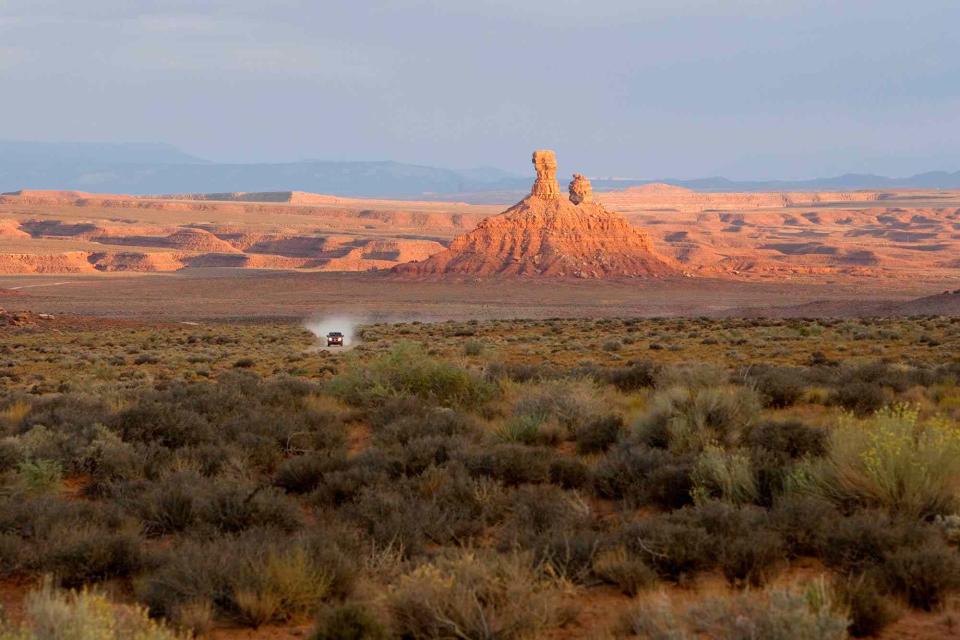
Bryan Allen/Getty Images
The Trail of the Ancients is a modern-day drive that connects the homesites and migration routes of America’s first peoples: the Ancestral Puebloans, Utes, and Navajo who lived in the Four Corners region from about 1 C.E. to 1300 C.E. The drive is the only National Scenic Byway that was designated primarily for its archaeological sites — and oh, what archaeological sites it has. Along the way, travelers pass elaborate dwellings carved into the cliffs, underground kivas, and petroglyphs that were etched into the rock thousands of years ago.
Like the people the trail memorializes, the route knows no borders. It circumnavigates the Four Corners region and passes through four states: Colorado, Utah, New Mexico, and Arizona. (Though, Arizona’s section of the byway has not yet been designated by the U.S. Department of Transportation’s Federal Highway Administration.)
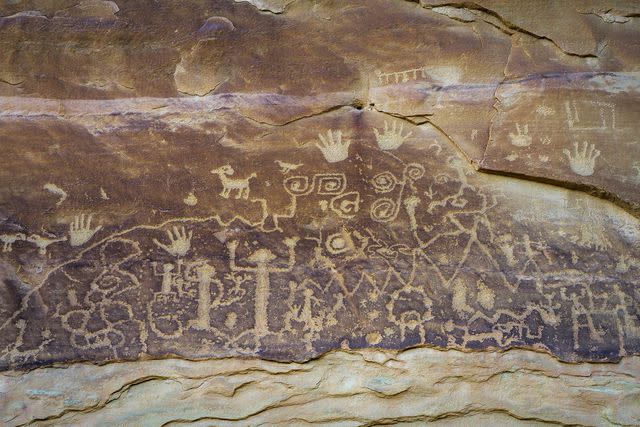
janetteasche/Getty Images
There is no “right” way to drive the multi-state Trail of the Ancients, which the Federal Highway Administration says is 480 miles in entirety. And your start and end point will depend on where you’re coming from. But, for simplicity, we’ve attempted to put together a route that hits most of — but not all — the trail’s most iconic sites, including Mesa Verde National Park, Hovenweep National Monument, and the sandstone monoliths of Valley of the Gods.
Albuquerque, New Mexico to Chaco Canyon
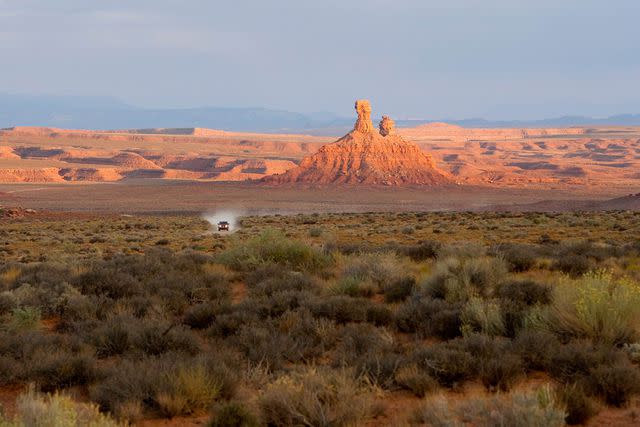
Bryan Allen/Getty Images
For ease of access, we recommend you start your journey in Albuquerque, which has an international airport: Albuquerque International Sunport (ABQ). From the airport, head west toward the land of the Navajo Nation, where you’ll link up with New Mexico’s Trail of the Ancients Byway.
In the town of Grants, you have the option to head southwest toward El Morro National Monument, where you’ll find over 2,000 signatures, messages, and petroglyphs — many from ancestral Puebloans. Or, you can head north toward the lesser-known Casamero Pueblo, the partially excavated archaeological site of an 11th-century Ancestral Puebloan community. For simplicity, we recommend the latter, which is en route to Chaco Culture National Historical Park (better known as Chaco Canyon), a massive Puebloan ruin that is considered to be the heart of New Mexico’s Trail of the Ancients Byway.
After exploring the great expanse of Chaco Canyon, backtrack to the highway and head north to Farmington, which is a short drive from Aztec Ruins National Monument and the Salmon Ruins Museum. After exploring Farmington, make your way west to Four Corners National Monument, where the borders of Colorado, New Mexico, Arizona, and Utah meet.
Four Corners National Monument to Mesa Verde National Park
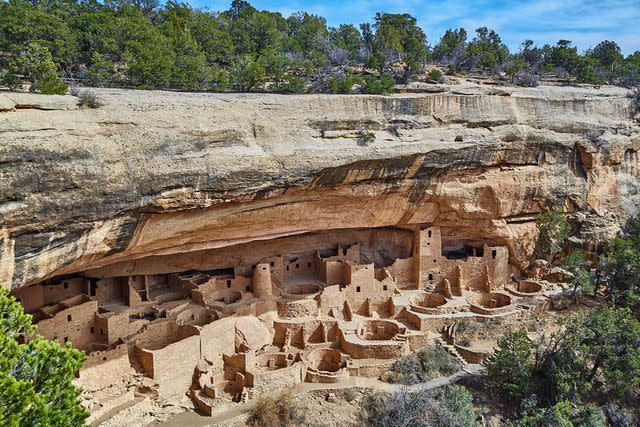
Peter Unger/Getty Images
From the Four Corners National Monument, head east to hop on the Colorado section of the Trail of the Ancients. Just outside Cortez, Colorado, you’ll find Mesa Verde National Park, a world-renowned park that houses the Cliff Palace, a well-preserved Ancestral Puebloan cliff dwelling.
After spending at least a day in Mesa Verde, continue north toward the Canyons of the Ancients Visitor Center & Museum, where you’ll learn about the Canyons of the Ancients National Monument, a 174,000-acre expanse with an estimated 30,000-known and unknown sites.
Eventually, travelers on Colorado’s Trail of the Ancients Byway will pass Hovenweep National Monument, which protects a series of ancient villages that were once home to over 2,500 people.
Hovenweep National Monument to Valley of the Gods
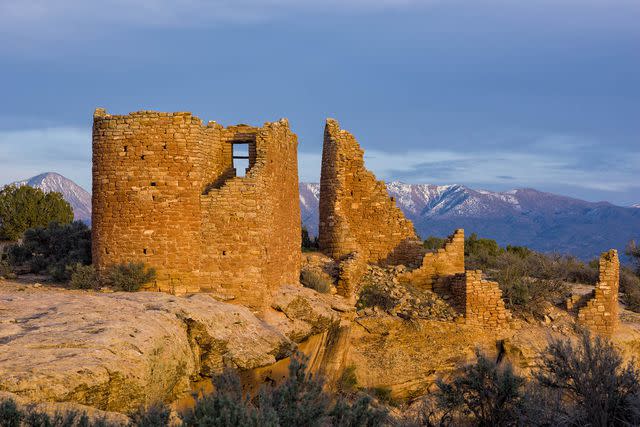
Adventure_Photo/Getty Images
From Hovenweep, make your way toward White Mesa and then head north toward Blanding, Utah. Before Blanding, take a left on Route 95, where you’ll pass a handful of archaeological sites. Along the road, you’ll find the Butler Wash Ruins cliff dwelling and the open kiva, tower, and dwellings at Mule Canyon. Eventually, you’ll come upon Natural Bridges National Monument, which is home to three of the world's largest natural stone bridges.
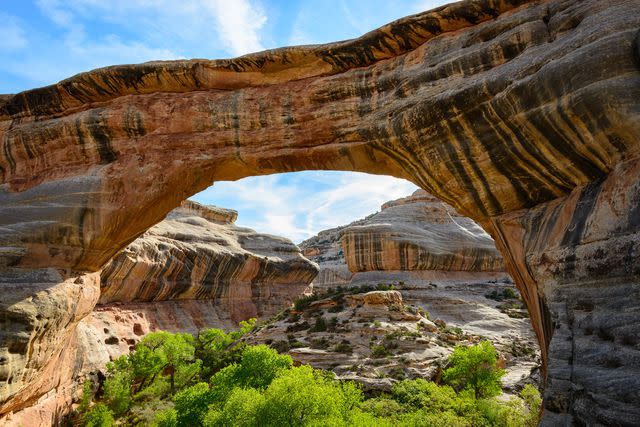
zrfphoto/Getty Images
After a full day in the monument, head south toward Grand Gulch Primitive Area, a serpentine canyon system full of Ancestral Puebloan cliff ruins and rock art. The next site on the Trail of the Ancients Byway, the sandstone monoliths of Valley of the Gods, requires a drive on the tight switchbacks of Moki Dugway. If you’re not comfortable with steep, sharp turns, go back the way you came and drive around to the Valley of the Gods’ highway access point.
For more Travel & Leisure news, make sure to sign up for our newsletter!
Read the original article on Travel & Leisure.

